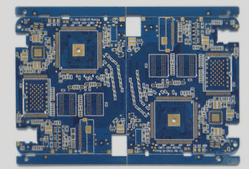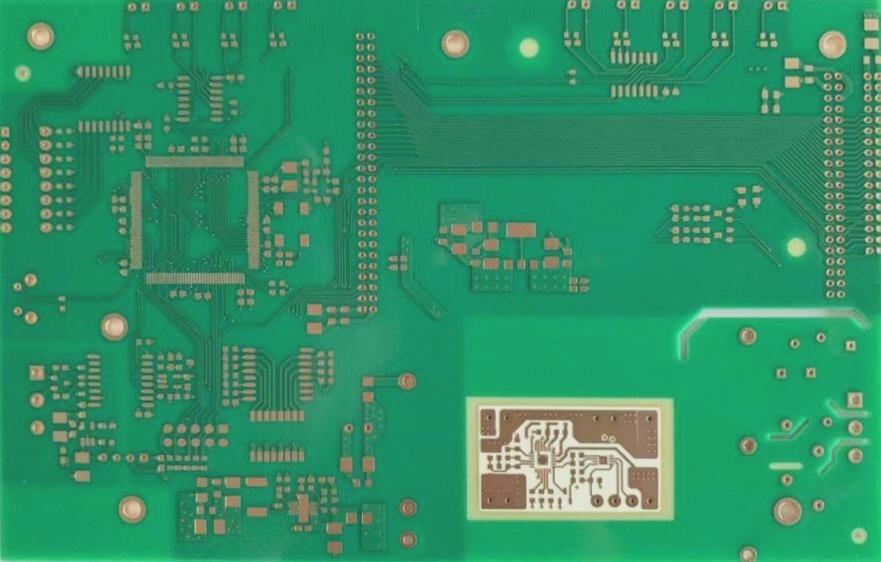PCBA processing involves various service methods, including OEM materials and processing materials. For customer-supplied PCBs, it is essential to conduct an incoming inspection. I will now detail how to assess PCB incoming materials.
1. PCB Size and Appearance Inspection
The PCB size inspection focuses on the diameter, spacing, and tolerance of processing holes, as well as the edge dimensions of the PCB. Appearance defect detection examines the alignment of the solder mask and pads, checking for abnormalities like impurities, peeling, or wrinkles in the solder mask. It also assesses the qualification of reference marks and ensures that the circuit conductor widths (line widths) and spacings comply with specifications, alongside verifying any remaining laminate layers. In practical applications, specialized equipment for PCB appearance testing is often utilized.
Typical equipment includes computers, automated workbench image processing systems, and other components. This system can inspect the inner and outer layers of multilayer boards, single or dual panels, and base map films, detecting issues such as broken lines, overlapping lines, scratches, pinholes, line widths, rough edges, and large area defects, among others.

2. PCB Warpage and Distortion Detection
Unreasonable design and improper processing may lead to warpage and bending of the PCB. The testing methods are specified in standards such as IPC-TM650.
The testing principle is straightforward: expose the PCB to a thermal environment representative of the assembly process and conduct a thermal stress test.
Typical thermal stress testing methods include spin dipping and solder float tests. In these methods, the PCB is immersed in molten solder for a specified duration, followed by testing for warpage and distortion.
To manually measure PCB warpage, position three corners of the PCB flat against the desktop and measure the distance from the fourth corner to the desktop. This approach only offers a rough estimate; more precise methods include the ripple camera technique.
The ripple camera method involves placing a light source with 100 lines per inch on the PCB, with a standard light source set at a 45° angle. Light passing through the source creates an image on the PCB, which is then observed from directly above using a CCD camera.
Interference fringes generated between the light sources appear across the PCB, indicating Z-axis offsets. By counting the fringes, one can calculate the offset height of the PCB, which can then be converted into a degree of warpage.
3. PCB Solderability Test
The solderability test for PCBs focuses on evaluating pads and plated through holes. Standards like IPCS-804 outline the methods for solderability testing, which include edge dip, rotary dip, and solder bead tests.
The edge dip test assesses the solderability of surface conductors, while the rotary dip and wave tests evaluate both surface conductors and electrical through holes. The solder bead test is specifically for electrical through holes.
4. PCB Solder Mask Integrity Test
PCBs used in SMT typically utilize dry film and optical imaging solder masks. These types of solder masks exhibit high adhesion and low fluidity. The dry film solder mask is laminated onto the PCB using pressure and heat, requiring a clean surface and effective lamination.
However, this solder mask has poor adhesion to tin-lead alloy surfaces and can peel or break under the thermal stress of reflow soldering. It is also relatively brittle, making it susceptible to microcracks from heat and mechanical forces during leveling.
Additionally, physical and chemical damage can occur due to cleaning agents. To mitigate these potential issues, a stringent thermal stress test should be performed during incoming material inspection, typically employing the solder float test for about 10-15 seconds at a temperature of 260-288°C.
If no peeling is observed, the PCB can be immersed in water post-test to check for capillary action between the solder mask and PCB surface. Similarly, immersing the PCB in SMA cleaning solvent can help identify any physical or chemical reactions with the solder mask.
5. PCB Internal Defect Detection
Internal defect detection in PCBs typically employs microsection technology, with specific methods outlined in standards like IPC-TM-650. After undergoing the solder float thermal stress test, the PCB is inspected microscopically.
Key inspection items include the thickness of the copper and tin-lead alloy coating, alignment of internal conductors in multilayer boards, interlayer voids, and copper cracks.
—
Let me know if you need any further adjustments!
1. PCB Size and Appearance Inspection
The PCB size inspection focuses on the diameter, spacing, and tolerance of processing holes, as well as the edge dimensions of the PCB. Appearance defect detection examines the alignment of the solder mask and pads, checking for abnormalities like impurities, peeling, or wrinkles in the solder mask. It also assesses the qualification of reference marks and ensures that the circuit conductor widths (line widths) and spacings comply with specifications, alongside verifying any remaining laminate layers. In practical applications, specialized equipment for PCB appearance testing is often utilized.
Typical equipment includes computers, automated workbench image processing systems, and other components. This system can inspect the inner and outer layers of multilayer boards, single or dual panels, and base map films, detecting issues such as broken lines, overlapping lines, scratches, pinholes, line widths, rough edges, and large area defects, among others.

2. PCB Warpage and Distortion Detection
Unreasonable design and improper processing may lead to warpage and bending of the PCB. The testing methods are specified in standards such as IPC-TM650.
The testing principle is straightforward: expose the PCB to a thermal environment representative of the assembly process and conduct a thermal stress test.
Typical thermal stress testing methods include spin dipping and solder float tests. In these methods, the PCB is immersed in molten solder for a specified duration, followed by testing for warpage and distortion.
To manually measure PCB warpage, position three corners of the PCB flat against the desktop and measure the distance from the fourth corner to the desktop. This approach only offers a rough estimate; more precise methods include the ripple camera technique.
The ripple camera method involves placing a light source with 100 lines per inch on the PCB, with a standard light source set at a 45° angle. Light passing through the source creates an image on the PCB, which is then observed from directly above using a CCD camera.
Interference fringes generated between the light sources appear across the PCB, indicating Z-axis offsets. By counting the fringes, one can calculate the offset height of the PCB, which can then be converted into a degree of warpage.
3. PCB Solderability Test
The solderability test for PCBs focuses on evaluating pads and plated through holes. Standards like IPCS-804 outline the methods for solderability testing, which include edge dip, rotary dip, and solder bead tests.
The edge dip test assesses the solderability of surface conductors, while the rotary dip and wave tests evaluate both surface conductors and electrical through holes. The solder bead test is specifically for electrical through holes.
4. PCB Solder Mask Integrity Test
PCBs used in SMT typically utilize dry film and optical imaging solder masks. These types of solder masks exhibit high adhesion and low fluidity. The dry film solder mask is laminated onto the PCB using pressure and heat, requiring a clean surface and effective lamination.
However, this solder mask has poor adhesion to tin-lead alloy surfaces and can peel or break under the thermal stress of reflow soldering. It is also relatively brittle, making it susceptible to microcracks from heat and mechanical forces during leveling.
Additionally, physical and chemical damage can occur due to cleaning agents. To mitigate these potential issues, a stringent thermal stress test should be performed during incoming material inspection, typically employing the solder float test for about 10-15 seconds at a temperature of 260-288°C.
If no peeling is observed, the PCB can be immersed in water post-test to check for capillary action between the solder mask and PCB surface. Similarly, immersing the PCB in SMA cleaning solvent can help identify any physical or chemical reactions with the solder mask.
5. PCB Internal Defect Detection
Internal defect detection in PCBs typically employs microsection technology, with specific methods outlined in standards like IPC-TM-650. After undergoing the solder float thermal stress test, the PCB is inspected microscopically.
Key inspection items include the thickness of the copper and tin-lead alloy coating, alignment of internal conductors in multilayer boards, interlayer voids, and copper cracks.
—
Let me know if you need any further adjustments!




